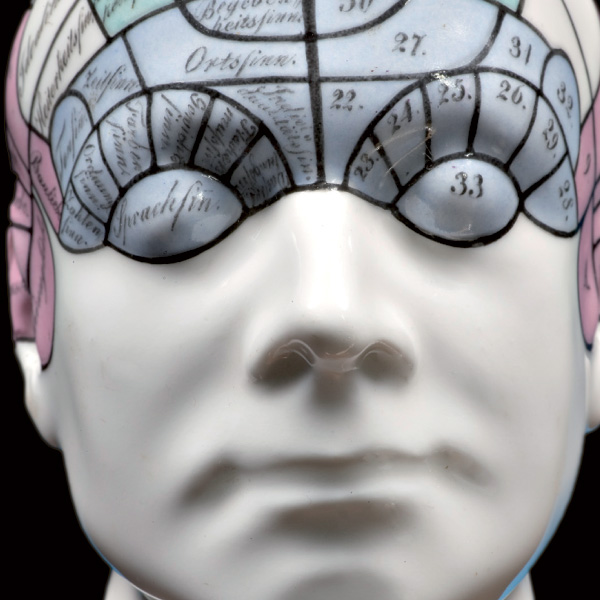Anatomy and teratology hall (Sala Assalini)
Sala di anatomia e teratologia (Sala Assalini)
The anatomy and teratology hall in the Musei is named after Paolo Assalini (1759-1846), a renowned 19th Century surgeon from the Reggio area. The hall hosts taxidermic and osteological preparations, finds stored in liquid, and anatomic models used for teaching purposes, as well as a number of teratologic specimens – all from the 1800s to the early 1900s.
Three pathways have been identified for interpreting the collection. The first involves comparative anatomy, the discipline that compares the anatomic structures of different animals; the second concerns teratology, the science which deals with malformations and their causes; the last pathway involves human physiology and anatomy.
Comparative anatomy. This pathway begins (stage I) with the display of a number of Invertebrates and their peculiar support structures, and includes a comparison of embryonic development and limb adaptation in several Vertebrates. Next (II-III), skeletons and skulls are shown, and a comparison of bone structures is supplemented with a display of skeletons (horse, antelope nilgai, tiger, baboon, dog and pelican) at the center of the hall, along with hippopotamus and rhinoceros skulls. Stage IV describes the internal systems of Vertebrates, with specimens – both dry and in liquid – of viscera and reproductive organs, and dissections illustrating the circulatory and nervous systems. The pathway ends with a centrally located showcase containing valuable taxidermic/osteological specimens showing both the external appearance and the skeletal structure of the same animal.
Teratology. The specimens in stages V-VI-VII include examples of vertebrates with various malformations that are generally caused by chromosome alterations, infectious agents (an excessive number of limbs in amphibian frogs), or abnormal embryonic development (the absence of limbs and various cases of “conjoined twins”; i.e., fetuses of dogs, cats, calves, pigs and lambs that are joined at birth). A curiosity in this pathway is the display of peculiar finds such as the “monstrous” eggs of various birds and the more picturesque “history eggs”, whose shells are believed to display (according to popular credence) traces of natural events occurring when the eggs were laid.
Human anatomy. In the pathway of human anatomy, the educational anatomic models of stage VIII stand out. Easily disassembled, they particularly highlight the bust of a young boy with heart, lungs, viscera, brain, sense organs and reproductive system on display. Worth special mention are three wax heads, which include a skillfully crafted “flayed” head. A collection of dry specimens of organs and human tissue distinguishes the next to last stage. Some are unique, such as “the amnion covering Domenico Pacchioni when he was born”, and an anatomic study of a young boy’s circulatory and nervous systems. Also shown is the development of the human embryo, which is explained not only by a number of finds, but also by tables from the “Treatise on Embryology” by Velpeau, a French 19th Century surgeon. The showcase even includes human teratologic specimens donated to the Museum for purposes of study. The final stage (X) concludes the pathway with a presentation of human skeletons of adults and newborns.
The Botany Hall, named after Filippo Re (1763 – 1817), hosts ten of the herbarium-based collections held by the Museum, in addition to the herbarium belonged to Lazzaro Spallanzani, which is maintained in the scientist’s Collection.
Of these, the oldest is a bound volume bearing the inscription, “Erborario Naturale di S. Spirito di Reggio” (Natural Herbarium of S. Spirito in Reggio), which can be traced back to the mid-17th Century. In it, specimens of herbs that are seriously deteriorated (and partially lost) are fastened to leaves using strips of colored fabric and are often accompanied by a description of their therapeutic properties. Also from the 17th Century is the “Herborarium Zanonium”, ascribable to the work of botanist Giacomo Zanoni. Among the herbaria from the 18th and 19 Centuries, the collection of agronomist Filippo Re particularly stands out. In it, more than 8000 local and exotic plant species ordered according to the Linnaean system are contained in 158 cases. The herbarium of Giovanni Fabriani, Re’s collaborator, is also included. Of great interest are the herbaria of Ingenuo Bertolini (1841 – 1917), Carlo Casali (1870 – 1930) and Antonio Cremona Casoli (1870-1949), who provided an overview of local flora in the early 20th Century by monitoring local collecting stations. The only current herbaria and the most recent acquisitions are those of Giuseppe Branchetti (1923 – 2009), which contain flora from the Reggio area, and Amer Montecchi, featuring underground mushrooms. In the showcases, you can also admire important botanical models that belong to teaching collections from the 1800s and contain flowers, fruit and seeds from the principal Angiosperm families. Models of mushrooms in plaster and wax that faithfully reproduce the morphology of both poisonous and edible types complete the collection.
address
via Spallanzani, 1
42121 Reggio Emilia
T. +39 0522 456816
offices
via Palazzolo, 2
42121 Reggio Emilia
T. +39 0522 456477
F. ’39 0522 456476

